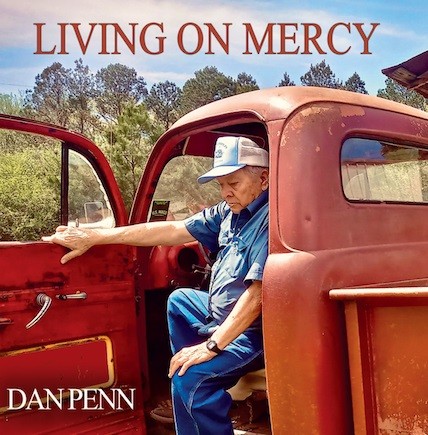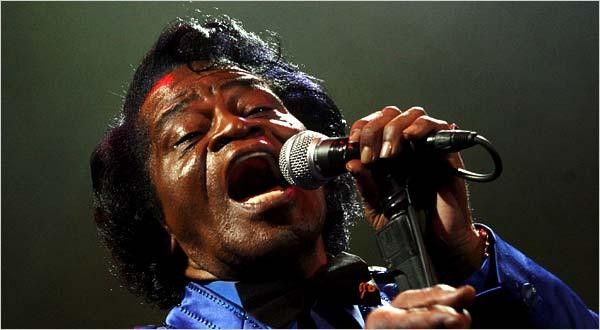Spreading 50 songs across two discs, with a 3-D finger-snap logo on the cover and handsome booklet with liner notes from Stax scholar Rob Bowman (and which doubles as a flip-book that animates the Stax logo — better for work procrastination than Web surfing!), Concord’s Stax 50th Anniversary Celebration is the best single-volume introduction to the Stax oeuvre yet released, in terms of combining the generally opposed qualities of accessibility and thoroughness.
Thirteen artists are represented by multiple selections, and only a reasonable desire to keep the likes of Otis Redding and Sam & Dave from dominating the collection keeps Stax 50th from packing in all of the label’s significant hits.
Of course, anyone who cares about American pop music will want to own more Otis Redding than the four songs presented here, so omissions in his regard aren’t so important. And Sam & Dave and Booker T. & the MGs, in particular, demand further exploration from even the most casual music fans. In fact, the only exclusion that seems at all glaring is Redding’s “These Arms of Mine,” his first single for Stax, which is crucial to the label’s story. But even here it’s easy to see why it was left off. Redding is already represented by four of the set’s 50 selections, including “I’ve Been Loving You Too Long (To Stop Now),” a ballad that trumps “These Arms of Mine.”
This collection peaks, arguably, where Stax did, in the mid-late ’60s, captured here midway through the first disc when durable classics such as “Knock on Wood,” “Tramp,” “Soul Finger,” “Soul Man,” and “(Sittin’ On) The Dock of the Bay” come in relatively tight succession. But, over the course of the 50-song stretch, this collection documents the evolution of the Stax sound as concisely as possible. Echoes of such early-’60s subgenres as frat-party R&B (the Mar-Keys’ “Last Night”) and girl-group pop (Carla Thomas’ “Gee Whiz”) quickly coalesce into a classic Stax sound honed by the same core of songwriters, producers, and musicians presiding over the majority of the label’s output. After the dual deaths of Redding (which shook Stax) and Martin Luther King Jr. (which shook the world), the sound began to change, as did the tone of soul music generally. Despite the occasional sure shot like Jean Knight’s “Mr. Big Stuff” (if the first 10 seconds of that record can’t lighten the mood in any room, the situation is hopeless), the ’70s work tends to follow the lead of Isaac Hayes — slower, more atmospheric, with longer song lengths.
I’d argue that some of the minor artists who get only one song aren’t showcased by their best work, such as the Mad Lads (I’d choose “Patch My Heart” over “I Want Someone”) and Mable John (I’d take the breathtaking “Don’t Hit Me No More” over the admittedly terrific “Your Good Thing”), and plenty of worthy relative obscurities are unrecognized (Wendy Rene, Ruby Johnson, Bobby Marchan, Jeannie & the Darlings). But, clearly, this magnificent listening experience is something that the record collection of any Memphis household that doesn’t already include more than half these songs needs, and if you’re looking for a Christmas present for some out-of-town relative or friend to showcase Memphis music, this is perfect. For people who only know the likes of “Soul Man” and “The Dock of the Bay,” 
Stax 50th will be an avenue for discovering underrecognized gems such as Ollie & The Nightingales’ “I Got a Sure Thing” and Linda Lyndell’s “What a Man.” A happy thought indeed.
I also suspect Stax 50th will provoke many listeners to explore deeper into the Stax catalog, which is good, because the best argument to be made for Stax over its Northern counterpart, Motown, isn’t its “grit” or “purity” or any such self-congratulatory boilerplate. It’s the incredible depth and consistency of Stax’s output. Match hits against hits, and it’s a toss up, with Motown perhaps more undeniable. But factor in “b” sides, album cuts, minor artists, etc., and Stax towers. You can get this most clearly over the course of the three-volume, 650-song “complete singles” box-set series still readily available. But those sets, obviously, are for fanatics.
Of course, caring about music and Memphis should put anyone on the path to being a Stax addict. If you or someone you love isn’t there yet, then Stax 50th is the perfect gateway drug.
The title The Queen Alone, a 1967 studio album from Carla Thomas, the undisputed “Queen of Memphis Soul,” is a reference to Otis Redding’s absence but not to his death. The album was recorded and released in the months prior to Redding’s December 10, 1967, death. Rather, it’s a reference to King & Queen, a duet record Thomas cut with Redding at the beginning of that year.
The classic cut on King & Queen was, of course, “Tramp,” a funky, witty musical dozens session in which Thomas and Redding play up their cultural differences — Thomas the sophisticated, educated, middle-class city girl; Redding the rough-around-the-edges downhome boy from Georgia.
Thomas had always been one of the softer, sweeter female voices in Southern soul, and The Queen Alone seems to represent a transition from the girlish charm of such early Thomas classics as “Gee Whiz” and “B-A-B-Y” to a more adult equivalent, a style that stretches the signature Stax sound in the direction of crossover pop and uptown soul, in the vein of such contemporary stars as Dusty Springfield and Dionne Warwick. As such, The Queen Alone ably splits the difference between this direction and the grittier template of most Stax music of the time.
The record opens with Thomas’ reading of the Burt Bacharach standard “Any Day Now,” which had first been a hit for R&B singer Chuck Jackson in 1962. There’s a string section present, but it doesn’t dominate. Instead, the strings act as another part of the rhythm section, playing off a snare beat and stabs of organ. The only other song on The Queen Alone that didn’t emerge from Stax’s in-house songwriting stable is in the same vein: The moody, dramatic “All I See Is You,” which had been a hit for Springfield the previous year and in which the normal punch of the Stax horn section is reduced to a sway.
But there are also moments on The Queen Alone where the full Stax songwriting/production team crafts new kinds of material for Thomas. “I Want To Be Your Baby” is a string-laden Hayes-and-Porter title that perhaps presages some of Hayes’ solo work in the coming years, and “I Take It To My Baby” deploys the classic horn-section punch but layers it over a rhythm track that’s more akin to Latin rock.
But while these detours from the classic Stax sound seem responsive to Thomas, they don’t dominate. The Deanie Parker-written “Give Me Enough (To Keep Me Going)” is girl-group-style soul in the vein of Thomas’ earliest hits, but elsewhere she proves she can also handle the label’s then-contemporary deep soul sound. The album’s biggest hit was the strutting “Something Good (Is Going to Happen To You),” which blends relatively hard, funky soul on the call-and-response chorus with expansive, breathy verses from Thomas. “I’ll Always Have Faith in You” and “Unchanging Love” are rooted in gospel. On the latter, Thomas navigates churchy piano and bluesy guitar fills for perhaps her most forceful vocal on the record, though her doses of melisma are still more restrained than most of her Southern soul contemporaries. And the real find on The Queen Alone may be the pleading, call-and-response deep soul of the (official) album-closing “Lie To Keep Me From Crying.”
This expanded and remastered release also includes five “bonus cuts” of extremely high quality, any of which would have been worthy of making the final cut. In fact, “Same Thing,” with a rhythmic lightness that suggests Motown, sounds like a better bet as a hit single than anything on the album.
Otis Redding was the only Stax artist from the ’60s usually thought of much in terms of his studio albums, but The Queen Alone suggests that this reading has caused a lot of music fans to miss a lot of great music, and hopefully a vigorous re-introduction of the Stax catalog can help correct that.
If The Queen Alone makes a compelling case for more reissues of Stax studio albums, Live at the Summit Club by Johnnie Taylor isn’t quite as persuasive when it comes to live sets, at least those that don’t have Booker T. & the MGs laying down the groove. This live set — most of it previously unreleased — was recorded in September 1972 in Los Angeles while the Stax caravan was in town for the WattStax concert. Taylor’s performance of “Jody’s Got Your Girl and Gone” was included in the film. Performing in a small, predominantly black club, Taylor emphasizes his blues side, with shrieking asides, gutbucket interjections, and the bluesiest laments (“Little Bluebird,” “Hello Sundown”) stretched out over seven minutes. If anything, Live at the Summit Club presages Taylor’s post-Stax, post-disco chitlin’ circuit future.
I can’t imagine that the band miscues and Taylor’s not particularly unusual or compelling reaction to them will be as interesting to anyone listening to Live at the Summit Club as they apparently are to Lee Hildebrand, who produced the three-disc Taylor box set Lifetime: A Retrospective of Soul, Blues, and Gospel 1956-1999 and who wrote the liner notes here. Live at the Summit Club is a good live document of an underrated soul singer who, for a time between the death of Otis Redding and rise of Isaac Hayes, was Stax’s most successful artist. But live albums by non-geniuses tend to get tedious, and Taylor — unlike Redding or Sam Cooke or James Brown, who all produced essential live albums — was no genius.


 Courtesy DittyTV
Courtesy DittyTV  Courtesy DittyTV
Courtesy DittyTV 